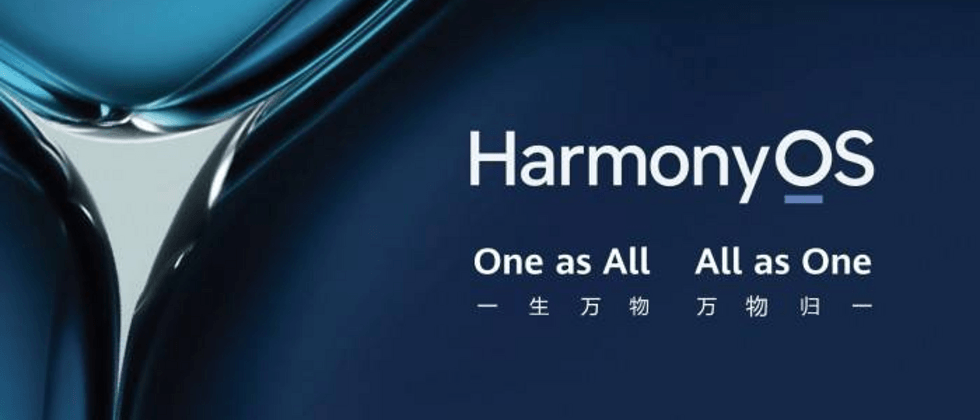作者:韩茹
公司:程序咖(北京)科技有限公司
鸿蒙巴士专栏作家
StackLayout直接在屏幕上开辟出一块空白的区域,添加到这个布局中的视图都是以层叠的方式显示,而它会把这些视图默认放到这块区域的左上角,第一个添加到布局中视图显示在最底层,最后一个被放在最顶层。上一层的视图会覆盖下一层的视图。因此该布局叫做堆栈布局。
它很自由,无论你放多少个组件进去他都是从左上角开始计算,所以你可以用layout_alignment和margin做出随心所欲的布局。
一、支持的XML属性
StackLayout无自有的XML属性,共有XML属性继承自:Component
| 属性名称 | 中文描述 | 取值 | 取值说明 | 使用案例 |
|---|---|---|---|---|
| id | 控件identity,用以识别不同控件对象,每个控件唯一 | integer类型 | 仅可用于配置控件的id。 | ohos:id="$+id:component_id" |
| theme | 样式 | 引用 | 仅可引用pattern资源。 | ohos:theme="$pattern:button_pattern" |
| width | 宽度,必填项 | float类型,match_parent,match_content | ohos:width="20" ohos:width="10vp" ohos:width="$float:size_value" | |
| height | 高度,必填项 | float类型,match_parent,match_content | ohos:height="20" ohos:height="20vp" ohos:height="$float:size_value" | |
| min_width | 最小宽度 | float类型 | ohos:min_width="20" ohos:min_width="20vp" ohos:min_width="$float:size_value" | |
| min_height | 最小高度 | float类型 | ohos:min_height="20" ohos:min_height="20vp" ohos:min_height="$float:size_value" | |
| alpha | 透明度 | float类型 | 取值范围在0~1。 | ohos:alpha="0.86" ohos:alpha="$float:value" |
| enabled | 是否启用 | boolean类型 | ohos:enabled="true" ohos:enabled="$boolean:true" | |
| visibility | 可见性 | visible,invisible,hide | ohos:visibility="visible" | |
| padding | 内间距 | float类型 | ||
| margin | 外边距 | float类型 |
StackLayout所包含组件可支持的XML属性见下表:
表1 StackLayout所包含组件可支持的XML属性
| 属性名称 | 中文描述 | 取值 | 取值说明 | 使用案例 | ||
|---|---|---|---|---|---|---|
| layout_alignment | 对齐方式 | left | 表示左对齐。 | 可以设置取值项如表中所列, 也可以使用“\ | ”进行多项组合。ohos:layout_alignment="top" ohos:layout_alignment="top\ | left" |
| top | 表示顶部对齐。 | |||||
| right | 表示右对齐。 | |||||
| bottom | 表示底部对齐。 | |||||
| horizontal_center | 表示水平居中对齐。 | |||||
| vertical_center | 表示垂直居中对齐。 | |||||
| center | 表示居中对齐。 |
二、排列方式
2.1 使用默认布局添加组件
StackLayout,一层一层。每个子控件,默认从左上角开始显示,离父容器的声明标签越近,越位于底层。也就是说,越在后面声明的控件,越在上层。
示例代码:
<?xml version="1.0" encoding="utf-8"?>
<StackLayout
xmlns:ohos="http://schemas.huawei.com/res/ohos"
ohos:id="$+id:stack_layout"
ohos:height="match_parent"
ohos:width="match_parent">
<Text
ohos:id="$+id:text1"
ohos:height="380vp"
ohos:width="match_parent"
ohos:text_alignment="bottom|horizontal_center"
ohos:text_size="24fp"
ohos:text="Layer 1"
ohos:background_element="#C71585" />
<Text
ohos:id="$+id:text2"
ohos:height="280vp"
ohos:width="280vp"
ohos:text_alignment="bottom|horizontal_center"
ohos:text_size="24fp"
ohos:text="Layer 2"
ohos:background_element="#FF69B4" />
<Text
ohos:id="$+id:text3"
ohos:height="180vp"
ohos:width="180vp"
ohos:text_alignment="center"
ohos:text_size="24fp"
ohos:text="Layer 3"
ohos:background_element="#FFC0CB" />
</StackLayout>效果图:
示例代码:
<?xml version="1.0" encoding="utf-8"?>
<StackLayout
xmlns:ohos="http://schemas.huawei.com/res/ohos"
ohos:height="match_parent"
ohos:width="match_parent"
>
<Text
ohos:id="$id:text1"
ohos:height="match_parent"
ohos:width="match_parent"
ohos:background_element="#CD853F"
/>
<Text
ohos:id="$id:text2"
ohos:height="600vp"
ohos:width="300vp"
ohos:background_element="#FF8C00"
ohos:layout_alignment="center"
/>
<Text
ohos:id="$id:text3"
ohos:height="400vp"
ohos:width="200vp"
ohos:background_element="#FFA500"
ohos:layout_alignment="center"
/>
<Text
ohos:id="$+id:text4"
ohos:height="200vp"
ohos:width="100vp"
ohos:background_element="#FFD700"
ohos:layout_alignment="center"
/>
</StackLayout>效果图:
2.2 使用相对位置添加组件
使用layout_alignment属性可以指定组件在StackLayout中的相对位置。
示例代码:
<?xml version="1.0" encoding="utf-8"?>
<StackLayout
xmlns:ohos="http://schemas.huawei.com/res/ohos"
ohos:height="match_parent"
ohos:width="match_parent"
>
<Button
ohos:height="50vp"
ohos:width="100vp"
ohos:text="Button 1"
ohos:text_size="20fp"
ohos:background_element="#eeeeee"
ohos:layout_alignment="right"/>
<Button
ohos:height="50vp"
ohos:width="100vp"
ohos:text="Button 2"
ohos:text_size="20fp"
ohos:background_element="#eeeeee"
ohos:layout_alignment="bottom"/>
<Button
ohos:height="50vp"
ohos:width="100vp"
ohos:text="Button 3"
ohos:text_size="20fp"
ohos:background_element="#eeeeee"
ohos:layout_alignment="vertical_center"/>
<Button
ohos:height="50vp"
ohos:width="100vp"
ohos:text="Button 4"
ohos:text_size="20fp"
ohos:background_element="#eeeeee"
ohos:layout_alignment="bottom|right"
/>
</StackLayout>效果图:
示例代码:
我们可以利用堆栈布局,结合layout_alignment和margin这两个属性,可以任意摆放。特别的方便。
这里负数就是在原来的基础上相反方向移动多少
注意:此处是负数,因为 layout_alignment = "center"
表示水平和垂直方向上居中,基准线为视图水平和垂直方向的中点,
因为鸟在基准线的上方向(负方向),所以为负数)
<?xml version="1.0" encoding="utf-8"?>
<StackLayout
xmlns:ohos="http://schemas.huawei.com/res/ohos"
ohos:height="match_parent"
ohos:width="match_parent"
ohos:orientation="vertical">
<!--第一层是背景-->
<!-- ohos:scale_mode="clip_center"图片缩放模式,可以查看Image的文档 -->
<Image
ohos:height="match_parent"
ohos:width="match_parent"
ohos:image_src="$media:tiankong"
ohos:scale_mode="clip_center"
/>
<!-- 第二层为小鸟,菩萨,跑车
负数就是在原来的基础上相反方向移动多少
注意:此处是负数,因为 layout_alignment = "center"
表示水平和垂直方向上居中,基准线为视图水平和垂直方向的中点,
因为鸟在基准线的上方向(负方向),所以为负数)
-->
<Image
ohos:height="50vp"
ohos:width="50vp"
ohos:scale_mode="stretch"
ohos:image_src="$media:bird"
ohos:layout_alignment="center"
ohos:top_margin="-120vp"
ohos:left_margin="-40vp"
/>
<!--菩萨-->
<Image
ohos:height="120vp"
ohos:width="100vp"
ohos:image_src="$media:pusa"
ohos:scale_mode="stretch"
ohos:layout_alignment="top|right"
ohos:top_margin="30vp"
ohos:right_margin="40vp"/>
<!-- 跑车-->
<Image
ohos:height="150vp"
ohos:width="150vp"
ohos:image_src="$media:car"
ohos:scale_mode="stretch"
ohos:layout_alignment="horizontal_center|bottom"
ohos:bottom_margin="50vp"/>
</StackLayout>效果图:
三、写个例子
一个有背景颜色的Text,一个图片,点击Text,显示图片,点击图片,显示Text,预览效果:
首先我们在layout目录 下,新建一个xml文件:demo_stack_layout.xml,代码如下:
<?xml version="1.0" encoding="utf-8"?>
<StackLayout
xmlns:ohos="http://schemas.huawei.com/res/ohos"
ohos:height="match_parent"
ohos:width="match_parent"
ohos:id="$+id:stack_layout"
>
<Text
ohos:id="$+id:text_msg"
ohos:height="match_content"
ohos:width="match_content"
ohos:layout_alignment="horizontal_center"
ohos:text="点一下有美女"
ohos:text_size="20fp"
ohos:top_margin="40vp"
/>
<Image
ohos:id="$+id:image1"
ohos:height="match_content"
ohos:width="match_content"
ohos:image_src="$media:xiaoniu"
ohos:layout_alignment="center"
ohos:clickable="true"
/>
<Text
ohos:id="$+id:text1"
ohos:height="460vp"
ohos:width="280vp"
ohos:background_element="#F8CAC5"
ohos:layout_alignment="center"
ohos:text="点击一下,有惊喜喔!"
ohos:text_alignment="center"
ohos:text_size="20fp"
/>
</StackLayout>初始效果:
<img src="https://img.chengxuka.com/WX20210623-094403@2x.png" alt="WX20210623-094403@2x" style="zoom:50%;" />
然后我们修改一下MainAbilitySlice.java的代码:
首先修改一下要显示的布局文件:
@Override
public void onStart(Intent intent) {
super.onStart(intent);
// 指定要展示的xml布局
super.setUIContent(ResourceTable.Layout_demo_stack_layout);
}然后获取xml中的控件对象,image对象,text1对象,还有textMsg对象,用于显示提示信息。然后给text1添加点击事件,点击text1的时候,将image对象,显示到前面,并且修改textMsg,更改显示到文本。再给image添加点击事件,点击iamge的时候,将text1对象,显示到前面,并且修改textMsg的文本内容。代码如下:
package com.example.myapplication.slice;
import com.example.myapplication.ResourceTable;
import ohos.aafwk.ability.AbilitySlice;
import ohos.aafwk.content.Intent;
import ohos.agp.components.*;
public class MainAbilitySlice extends AbilitySlice {
@Override
public void onStart(Intent intent) {
super.onStart(intent);
super.setUIContent(ResourceTable.Layout_demo_stack_layout);
ComponentContainer stackLayout = (ComponentContainer) findComponentById(ResourceTable.Id_stack_layout);
Text textMsg = (Text) findComponentById(ResourceTable.Id_text_msg);
Text text1 = (Text) findComponentById(ResourceTable.Id_text1);
Image image = (Image) findComponentById(ResourceTable.Id_image1);
text1.setClickedListener(new Component.ClickedListener() {
@Override
public void onClick(Component component) {
// 指定的把子元素搬到前面去
stackLayout.moveChildToFront(image);
textMsg.setText("点一下,带回去,藏起来。。");
System.out.println("component--------------------"+component);
}
});
image.setClickedListener(new Component.ClickedListener() {
@Override
public void onClick(Component component) {
stackLayout.moveChildToFront(text1);
textMsg.setText("点一下有美女");
System.out.println("component--------------------"+component);
}
});
}
@Override
public void onActive() {
super.onActive();
}
@Override
public void onForeground(Intent intent) {
super.onForeground(intent);
}
}
运行即可。







**粗体** _斜体_ [链接](http://example.com) `代码` - 列表 > 引用。你还可以使用@来通知其他用户。